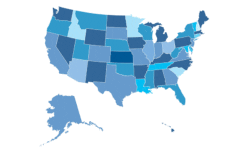10 Keys to Testing Campus Preparedness
Will your staff, teachers, administrators and clinicians respond effectively to an emergency on campus? Here’s how you can determine if they will take the right steps to save lives.

There have been many instances where lives have been lost at a school, hospital or institution of higher education because emergency preparedness concepts were unsound. One powerful example of this occurred nearly 60 years ago when 95 students and staff died as a result of a faulty approach to fire drills. The 1958 Our Lady of Angels Sacred Hearts School fire in Chicago serves as a deadly example of how unreliable crisis plans can appear to be sound and seem to work fine during regular drills.
According to Michelle McBride’s book The Fire that Will Not Die, the school took fire very seriously and conducted fire drills each month. During these drills, more than 1,200 students and staff were able to evacuate the building in about three minutes. But as McBride points out, things did not go well when an actual fire occurred. An estimated five minutes passed between the time the fire was discovered by a teacher and the time the fire alarm was sounded.
RELATED: How to Use Scenarios in Training to Improve Campus Safety and Security
The school had accidentally conditioned staff to evacuate when the alarm sounded but had failed to condition them to be the person to pull the alarm. Rather than pulling a fire alarm to initiate an evacuation, the teacher searched the building trying to locate the headmaster. This five-minute delay resulted in 95 deaths.
Scenario-based simulations and post-incident evaluations of actual campus crisis events reveal that many campuses are still using 1958-style emergency drills.
Proper Testing of Emergency Approaches Saves Lives
There is a simple yet powerful and inexpensive way to address the problem of drills that fail to train staff to take immediate action and properly communicate that an emergency exists. Simple adjustments in the basic drill approach can help campus safety officials identify and correct gaps between what plans direct staff to do and what they may actually do when an emergency occurs.
This revised approach requires individual employees to make the same types of decisions and communications they would in an actual emergency. With this approach, a central authority such as a building administrator or campus safety professional still determines what type of drill will be conducted and when it will be held. However, instead of making the communication that will initiate the drill, an individual staff member is selected and presented with a specific crisis scenario. This employee must then determine on their own what actions and communications need to be initiated.
For example, an elementary school principal wanting to conduct a monthly fire drill might select a teacher and present him or her with a scenario involving a fire. Ideally, the teacher would respond to the scenario by evacuating the students, pulling the nearest fire alarm, calling an administrator and then calling 911. The same approach can be used to initiate lockdowns, reverse evacuations, severe weather sheltering and emergency medical responses.
This approach is effective because it forces employees to confront the reality that they may one day be called upon to save lives by initiating immediate life-saving protective actions and communications without receiving direction from a supervisor. Because every employee knows they may be approached at any time and presented with a scenario, personnel typically begin to pay more attention to crisis plans as well as evacuation routes, shelter areas, locations of fire alarm pull stations, Automatic External Defibrillators and other important aspects of their workplace.
10 Key Success Strategies
- Considerations for safety and logistics should be considered. Employees should not be prompted in a manner that makes them think they are faced with an actual life-threatening situation. Proper notifications should be made for front office, security, law enforcement, 911 and alarm company personnel as appropriate to prevent false alarms.
- Care should be taken not to frighten employees and others. For example, it would not be appropriate to pose a staff member with scenario of a gunman opening fire within hearing of second grade children at an elementary school.
- All personnel should be informed how the new types of drills will be conducted before this approach is used.
- Employees should be provided with the appropriate plan components, empowerment and training they will need to respond properly before these types of drills are implemented.
- While it is fine to tell employees what day and even a time frame for drills, they should not know which type of scenario they will be presented. Unfortunately, some state laws and union agreements require that staff be notified of drills in advance.
- When an employee responds properly, they should be publically praised. This reminds other employees that they might be selected for the next drill.
- When an employee does not know how to respond to a scenario, they should be tactfully retrained in a private setting.
- Vary the scenarios to cover a wide array of situations. Survivability can be decreased if you focus only on a few scenarios such as active shooter, tornado and fire. It is especially important to include scenarios for common medical situations and a wider array of situations involving potentially violent people.
- Pay close attention to responses that would clearly be dangerous. These situations often involve improper plans, procedures or training rather than bad decisions by individual employees. If concepts do not test well with scenarios, it is likely that results will be even worse under actual crisis conditions.
- Always remember that you are really testing how well your organization has prepared people to make high-stakes decisions rather than testing individuals.
Using a variety of scripted, audio and even video crisis scenarios, you can obtain a much better measure of how well campus employees will respond to life-threatening events. That’s why Campus Safety magazine has partnered with Safe Havens International to provide you with five free audios that describe emergencies that can occur on any type of campus, including a university, hospital or K-12 school. The scenarios cover medical emergencies, weapons, lockdowns, emergency notification and more. To learn more, click here.
These audio scenarios enable you to identify and correct gaps before an emergency occurs. This approach can also help to build confidence among employees while also affording a greater degree of confidence among campus leaders that employees have been properly trained and empowered to make these types of critical decisions.
Photo: ThinkStock
If you appreciated this article and want to receive more valuable industry content like this, click here to sign up for our FREE digital newsletters!
 Leading in Turbulent Times: Effective Campus Public Safety Leadership for the 21st Century
Leading in Turbulent Times: Effective Campus Public Safety Leadership for the 21st Century
This new webcast will discuss how campus public safety leaders can effectively incorporate Clery Act, Title IX, customer service, “helicopter” parents, emergency notification, town-gown relationships, brand management, Greek Life, student recruitment, faculty, and more into their roles and develop the necessary skills to successfully lead their departments. Register today to attend this free webcast!








